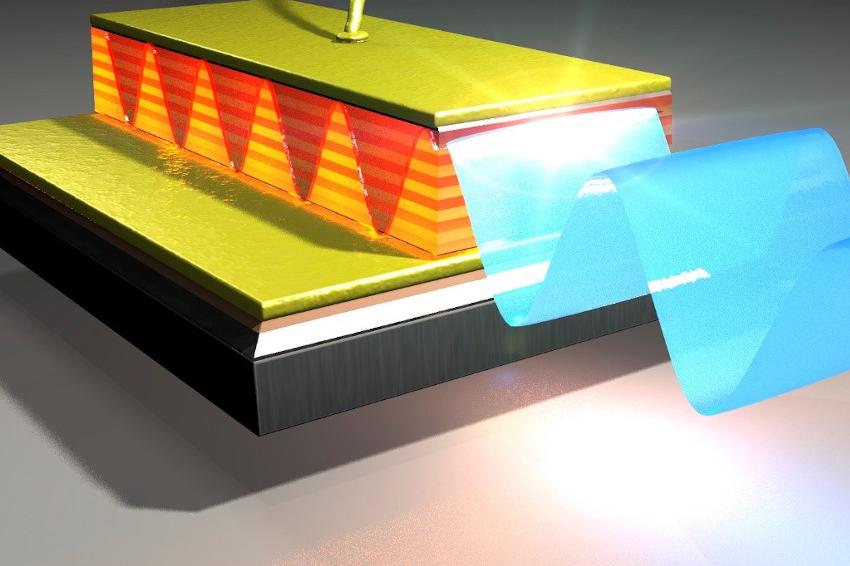Millimeter wave photonics with terahertz lasers
17.03.2021 - New approach for compact, low noise mmWave generation using THz frequency combs.
The volume of wireless telecommunication traffic is expected to surge in the near future with a continual increase in data traffic and corresponding necessary increase in bandwidth. It has therefore become inevitable to increase the photon frequency into the upper reaches of the millimeter region, which corresponds to frequencies between 30 GHz to 300 GHz. Millimeter wave generation using photonic techniques has so far been limited to the use of near-infrared lasers that are down-converted to the mmWave region. However, such methodologies do not currently benefit from a monolithic architecture and suffer from the high difference in photon energies between the near-infrared and mmWave region – a quantum defect, which can ultimately limit the conversion efficiency.
Terahertz (THz) wave region, with photons of lower energies, is however highly adapted. Moreover, we know how to generate them thanks to a compact miniaturized device, the quantum cascade lasers (QCLs). These lasers have inherent other advantages in this respect: their ultrafast dynamics and high nonlinearities open up the possibility of innovatively integrating both laser action and mmWave generation in a single device.
Now, LPENS researchers of the Nano-THz group, in collaboration with teams of C2N, NEST in Pisa, ONERA in Palaiseau and the University of Leeds have demonstrated intracavity mmWave generation within THz QCLs over the unprecedented range of 25 GHz to 500 GHz. Importantly, this work opens up the possibility of compact, low noise mmWave generation using THz frequency combs. (Source: LPENS)
Link: Laboratoire de Physique de l’Ecole Normale Supérieure, Université de Paris, Paris, France






